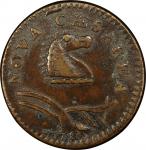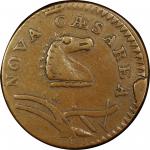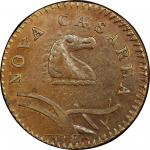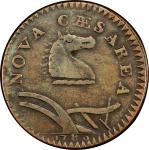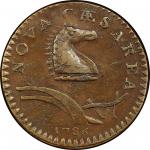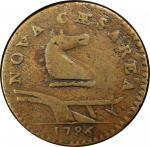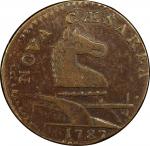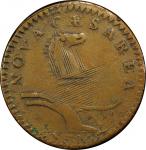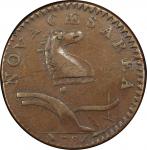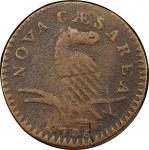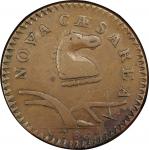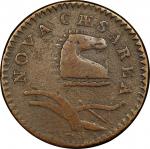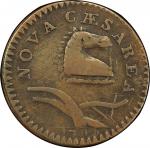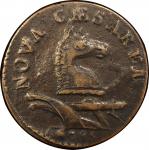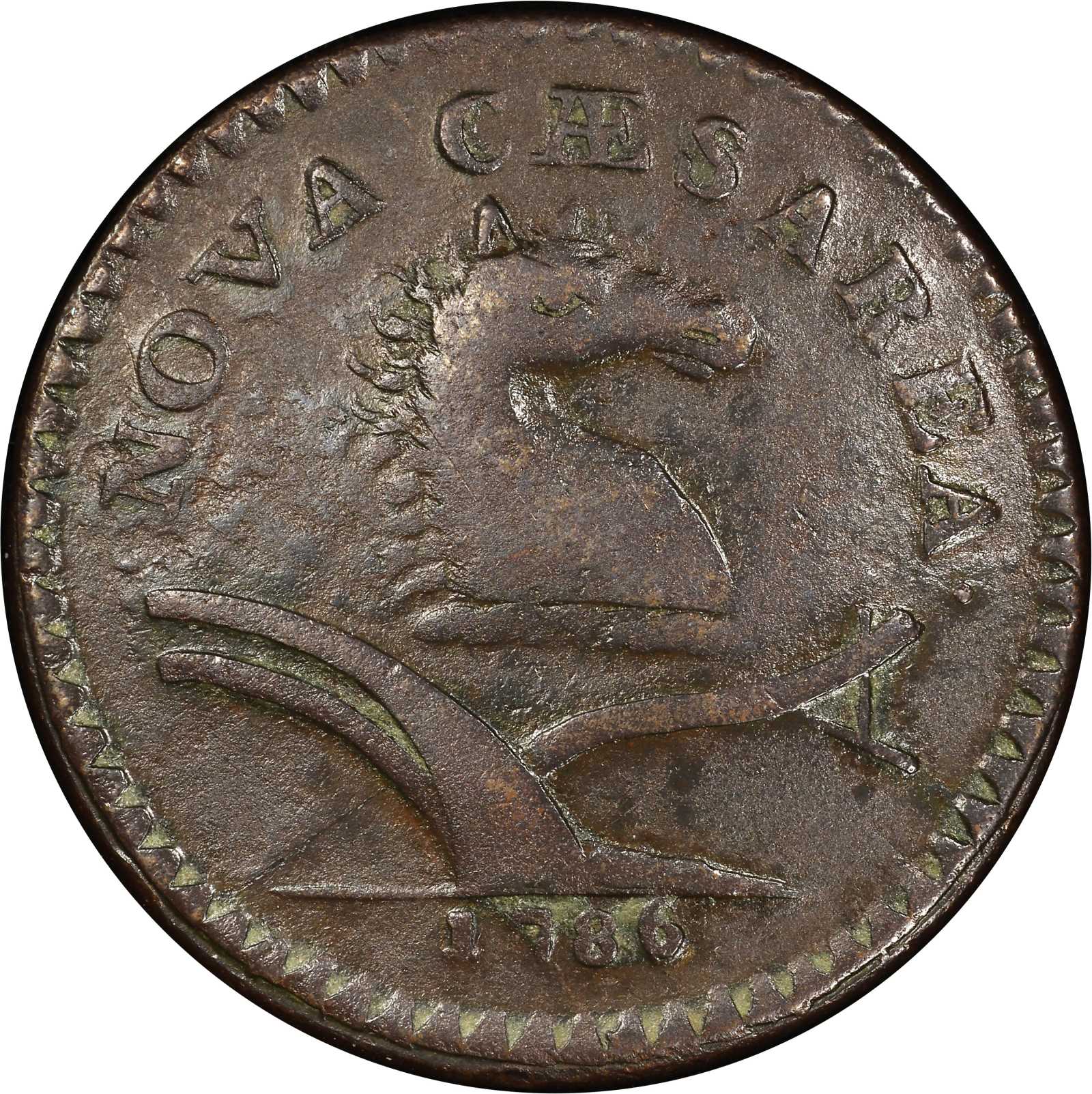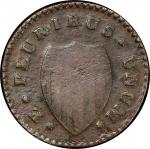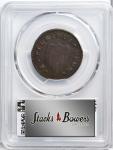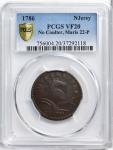1786 New Jersey copper. Maris 22-P. Rarity-7. No Coulter. VF-20 (PCGS).138.8 grains. An exciting discovery in the E Pluribus Unum Collection, the seventh recorded specimen from this No Coulter die marriage. Glossy dark olive with the sort of extremely fine granularity that comes from ground exposure. The obverse is trivially aligned to the upper right, with some die edge visible at lower left. The reverse is ideally centered. The sharpness is good on both sides, with the horsehead retaining some eye detail and the reverse shield preserving a decent amount of internal detail. A few old scratches are seen near the center of the shield, more right than left, and a green pit is noted between RI of PLURIBUS. The appearance is not beautiful, but it is not without its appeals. The die crack from the plow bar and the left base tip of the singletree arcs down to its end at the rim near 4:30; this crack was probably the death knell of this short-lived die, as all known specimens are in more or less the same die state.<p>The best of the Maris 22-Ps is the Boyd-Ford coin, with earlier provenance to Parmelee, Dr. Hall, and Virgil Brand, whose obverse is illustrated on the Maris plate. Bill Anton bought it for $46,000 at the 2003 Ford I sale, where your cataloger thought it was a very pretty VF-20 coin. Two of these are impounded, including a pretty nice one in NJHS and a less nice one in the ANS. The other three, aside from this one, are the Maris-Garrett-Picker-Demling coin (called VF-), the Rescigno (Saccone sale) coin in Syd Martin’s collection (called F-), and the Spiro-Oechsner-Garrett/Spring Quartette coin that isn’t quite Good. The SHI census lists six coins, of which five have a minus sign after their grade. This one would probably lose in a head-to-head matchup with the Demling coin, but looks better than the rest, so let’s say it’s probably no worse than fourth finest and may be third depending upon how it compares with the NJHS coin.<p>Michael Hodder’s work on the No Coulters in <em>Colonial Newsletter</em> issue 96 (October 1993) lays out useful data and some worthwhile conclusions, however, the metrology of planchets may not have much to do with die emissions, order of die productions, or much else other than the order in which the planchets were made. In any mint, a die shop and a planchet production operation are very different functions, and a pile of planchets might be used immediately or might sit for months before striking. While the difference between 138 and 145 grains may mean a lot to numismatists today, it could have meant nothing more to the minters than a slight difference in the thickness of acquired sheet copper or the settings on the rolling mill if the copper was being rolled from ingot. Further, the analysis based upon the weights of a small sample (fewer than ten, or fewer than five) of worn and corroded coppers makes drawing conclusions from minute weight differences problematical. Diameter is perhaps more useful, as differences of diameter suggests a different set of tools, and tools tended to be used with more permanence than the easily toggled settings on a rolling mill. But still, if Monday’s planchets ended up beneath the planchets from Tuesday through Friday in the hopper, the order of striking could well be opposite to the order of planchet production — or have no relationship whatsoever. Stylistic relationships among dies are useful but open to interpretation, and there is no evidence to suggest that dies were used in the order in which they were produced. In short, a big pile of good data may never lend itself to any kind of conclusions that rise above the speculative.<p>Some speculation is very useful though! Take, for instance, the suggestion of Siboni, Howes, and Ish that Maris divorced his obverse 22 from the other No Coulters for no more significant reason than he wanted his plate to lay out nicely. This concept, laid out on p. 260 of their book, makes perfect sense, even though it may force us to wonder what other decisions by our numismatic demi-gods were made for similar trivial reasons before being adopted into the immutable received wisdom of numismatic gospel.<p>As a rare No Coulter, this variety has special importance. As one that is set off from the crowd with its illogical numbering, it has become even more interesting. Hard to find in any grade, the Maris 22-P basically doesn’t exist in any choice condition, much less in high grade. The appearance of this one for what appears to be the first time is an historic event in the annals of this die variety, one that has been known since before 1881, but whose population has increased since then by only four pieces.From the E Pluribus Unum Collection of New Jersey Coppers.

